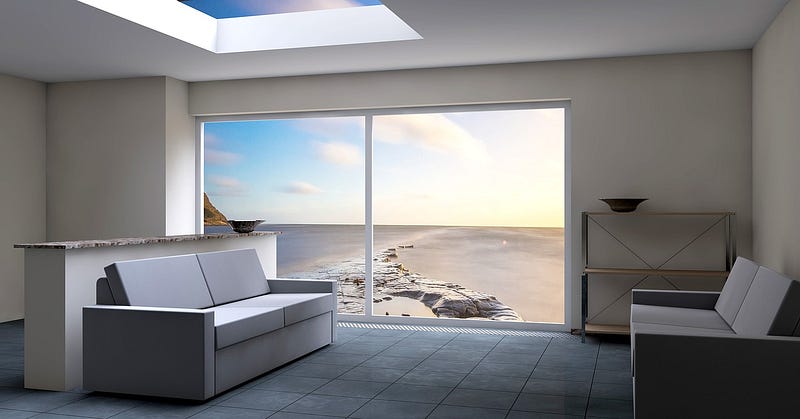ENVIENTA Lifestyle: building blocks for a new world
ENVIENTA Lifestyle: building blocks for a new world

Because of our intro video, many people identify ENVIENTA with their cube houses. This is not a coincidence because these houses are carrying a symbolic meaning: at the ENVIENTA project, we would like to design the building blocks of a new world. This post will reveal that the thing is not so symbolic and that the concept goes far beyond these utopian habitats. Keep up with us and see how deep is the rabbit’s cavity…
In the introduction of the project’s first phase, we have talked a lot about these buildings. We have told that they are made out of recycled containers, because they are electric network-independent thanks to the built-in solar system and that we will share the plans with the community in the spirit of open source so anyone can build or upgrade them.
However, we did not talk about the most exciting part: these buildings will be able to collaborate with each other as part of a network and they are able to share their resources thanks to IoT systems. But this is also valid for the aquaponics automated garden and other ENVIENTA components. Like a huge living organism, these components are its cells and we, humans, are also the part of it (a bit later about this).
Let’s see an example of how it works in real life. Each building has solar panels and storage. To avoid disruption of power supply these isolated system needs to be designed with redundancy. Of course, the result is that many of the capacity is often unused. However, if multiple systems are organized into a smart grid, the required capacity can be reduced. If the energy produced by our own household is not enough, we can borrow from the neighbor or use his storage capacity to store the extra energy we produce.
The system can be supplemented by additional smart tools. For example, the dishwasher starts washing or the boiler will heat up the water when the stored energy is at the maximum level. The implementation of the system will be decentralized (without a central server) and will be done on a blockchain basis. Each asset is recognized as resource credits and the goal is to minimize costs. It’s a kind of automated energy exchange. The operation of the system can also include real money transactios (we will assign the costs to the members of the community at the end of every month) but this is not strictly necessary. The resource exchange market is much more aimed to optimizing processes, which not only reduces costs but can also reduce our environmental impact (ecological footprint).
But the energy usage is just one example of many. The model can be generalized for other resources as well. Such may be, for example, consumption-adjusted agricultural production where, recognizing the habits of the members, an optimum amount of vegetables and fruits can be produced by a community. Tools can also be resources. In the future, for example, a self-driving car shared by members of the community, 3D printers, tools, etc. At this point, we can talk about a new level of cooperation. ENVIENTA does not only provide hardware and software to its systems, but also a community model, which is referred as ENVIENTA Lifestyle.
ENVIENTA Lifestyle
It is a sort of decentralized sharing economy model. I would like to emphasize the decentralized nature of the model because nowadays the sharing economy means Uber or Airbnb for most people, where a company brings together supply and demand for an extra fee. Instead of this centralized model, there is no third party in the ENVIENTA model. Demand and supply are directly linked to each other, and the participants in the transaction may be people (using someone’s self-driving car), but they can also be tools and the processes which be fully automated (e.g. energy transfer between two buildings).
The system outlined above can be scaled without any limitations. This means that the components which have been developed in the context of the project ENVIENTA can operate individually, but as you can see, they can be organized into networks. Small communities with few families can be created, and even entire ENVIENTA cities can be born. This can be several small, family-friendly communities spread across the city, who share their resources, but depending on the nature of the shared resources, cooperation can be even cross-border. It’s a virtual state in a real state that we’ve already described in an older post. We believe that by optimizing the resources, the costs can be significantly reduced, and eventually, with the help of technology, we can reach a point which is called “Zero marginal cost society” by economist Jeremy Rifkin, where community members get all needed resources virtually free of charge.
Venus Project
In one my earlier posts about ENVIENTA, I started with mentioning the Venus Project to have a clear picture of how would the world look like if the ENVIENTA project was brought to life. The Venus Project is a utopia from a world where people can use technology with unlimited abundance. The idea of Jacque Fresco is a really noble idea, but from our point of view, it is more like a scientific fantasy, even though we are not too far from it in a technological context. We think that the Venus Project’s has a major flaw: it’s closed and isolated. It is a complex ecosystem, the smallest unit is a city which operates under strict rules. It’s too big a move and too complex paradigm shift to the people of today.
ENVIENTA is modular, open, and has a bottom-up structure. The components can operate on their own, but they can be the part of a network to have additional benefits. It is not necessary for the nodes to be placed near to each other to share their resources since multiple isolated hubs within a real city can form a “virtual city”. We also give a social model (which is practically the same as Fresco’s resource-based sharing economy), but this is more like a recommendation, and as this is just like any other component is open source and can be developed by anybody. ENVIENTA, therefore, gives only recommendations, no strict rules. Instead, we encourage everyone to design, contribute, create their own models.
We are not thinking that we are holding the holy grail in our hands. We just want to show a direction where a community can develop their model, which may be fundamentally different from what Fresco did. We want to make this work easier with the ENVIENTA platform, which is a kind of community space for development and with the design of a decentralized manufacturing environment which aims to get products ready from ideas quickly. Of course, we have no illusions. We do not think that ENVIENTA would be some kind of huge technological innovation. Those who follow the trends know well that technology goes in this direction without us also, and the systems outlined above will obviously be implemented in the near future. But ENVIENTA is not about technology, but about its availability. Because it does not matter that, for example, robotization of work has brought us unprecedented unemployment and misery or unprecedented abundance. The only difference between these two is access to technology and resources.
And because I’ve talked so much about the Venus Project, I’d close the post with them. I could not find better words at the end of my story: Paradise or Oblivion…

You can also be the part of the ENVIENTA project as soon as we launch our ICO token sales campaign. If you think that you want to be one of our investors (even with a minimal amount), please sign up on the following whitelist: http://envienta.com/whitelist.php